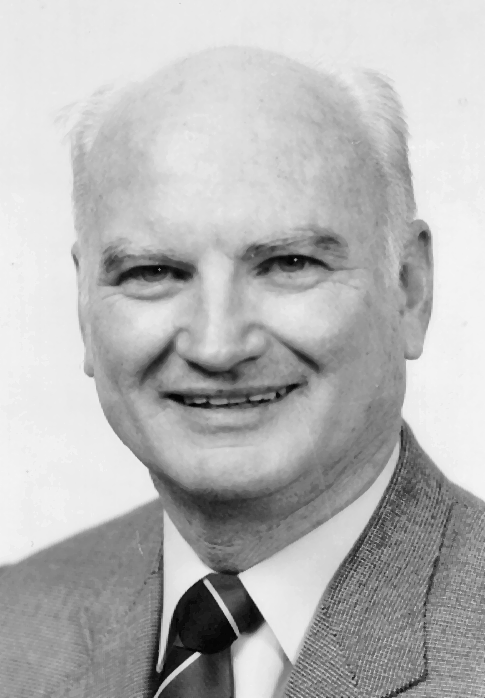
Dr. William G. Duff
Associate Editor

 William Eugene Cory (Gene) served in the US Navy from April 1945 to
July 1946 where he attended Captain “Eddy’s” Radar Technician Course. He
graduated from Texas A&M with a Bachelor of Science in Electrical Engineering in
January 1950. In September 1959, Gene received the Master of Science in Engineering from
the University of California at Los Angeles. He has completed additional studies in
Mathematics and Economics at Trinity University in San Antonio. In June 1950, he applied
for and received a direct commission as a 2nd Lieutenant in the U.S. Air Force. He retired
as a Major after completing 20 years of satisfactory military service, mostly in a reserve
capacity.
William Eugene Cory (Gene) served in the US Navy from April 1945 to
July 1946 where he attended Captain “Eddy’s” Radar Technician Course. He
graduated from Texas A&M with a Bachelor of Science in Electrical Engineering in
January 1950. In September 1959, Gene received the Master of Science in Engineering from
the University of California at Los Angeles. He has completed additional studies in
Mathematics and Economics at Trinity University in San Antonio. In June 1950, he applied
for and received a direct commission as a 2nd Lieutenant in the U.S. Air Force. He retired
as a Major after completing 20 years of satisfactory military service, mostly in a reserve
capacity.
In January 1950, he joined the U.S.A.F. Security Service, where he conducted analyses of
secure communications requirements of major Air Force Commands and designed special
equipment. He also served as a project officer on what is now known as Tempest, including
serving on the JECE committee tasked to establish national Tempest policy. He also served
on the Tri-Service committee on IFF problems. In 1952, he was promoted to Chief, Ciphony
and Cifax Division. Gene received a Special Service award and had one patent application
filed, which was declassified and issued in 1981.
In 1957, Gene took a position as Electronic Systems Engineer with Lockheed Aircraft
Company at Burbank, California. He was responsible for communications, navigation and
identification on the advanced weapons development team. Programs that Gene worked on
included CNI preliminary design on Airborne Early Warning, Anti-Submarine Warfare,
Interceptor and Fighter-Bomber weapons systems. He transferred to Lockheed in Marietta,
Georgia as an Aircraft Development Engineer Specialist. Programs included a
Bomber-Navigator Trainer using the Lockheed Jet Star and a Lockheed version of the Army
Mohawk.
In 1959, Gene returned to San Antonio, where he joined Southwest Research Institute (SWRI)
as a Senior Research Engineer. He was promoted to Manager, Communications Section in 1961,
Director, Electronic Systems Department in 1965, and Vice President, Electronic Systems
Research Division in 1972. Responsibilities included technical, management and promotion
of R&D in the fields of Automation, Bioengineering, Communications, Data Systems,
Electromagnetic Compatibility, and Earth Sciences. Gene retired from SWRI in 1989.
He is presently managing his own company, Cory Consulting, where he provides consulting
services in research management, electromagnetic compatibility and electromagnetic
bioeffects.
Gene has received seven patents and authored nineteen papers and numerous technical
reports, many on EMC subjects.
He has had the privilege of serving the IEEE and EMC Society in over 50 capacities
including: Member, IEEE Board of Directors; Director, IEEE Region 5; President, IEEE EMC
Society; Member, IEEE EMC Society Board of Directors; General Chairman, 1975 IEEE EMC
Symposium; Organizer and Director, MIDCON. He has also served on the National Research
Council’s Electromagnetic Pulse Environment Committee, the National Research
Council’s Electronics and Electrical Engineering Panel, Board of Assessment of the
National Institute of Standards and Technology, and the USAF Aeronautical Systems
Division’s Advisory Group on Pave PAWS Electro-Explosive Device Safety.
Gene has received many awards, including the IEEE Fellow Award for “contributions in
the fields of electromagnetic compatibility and systems analyses”, the IEEE EMC
Society Lawrence C. Cummings Award for “outstanding service to the EMC Society as
President, Committee Chairman, and a member of the Board of Directors”, and the IEEE
EMC Society Richard B. Stoddard Award for “contributions to the low frequency
near-field measurement technology for the evaluation of the effects of electromagnetic
energy on the environment.”
Gene and his wife Doris have a son, Bill, and a daughter, Karen, and three grandchildren.
They enjoy attending theater performances and World Affairs Council lectures and
travelling. Gene’s hobbies include chess, stamp collecting and science fiction.
Return to Contents page